Article Author
Teri Silver
Teri Silver is a journalist and outdoor enthusiast who spends her weekends mowing her 5-acre lawn. She's an avid do-it-yourselfer who refurbishes anything she can get her hands on.
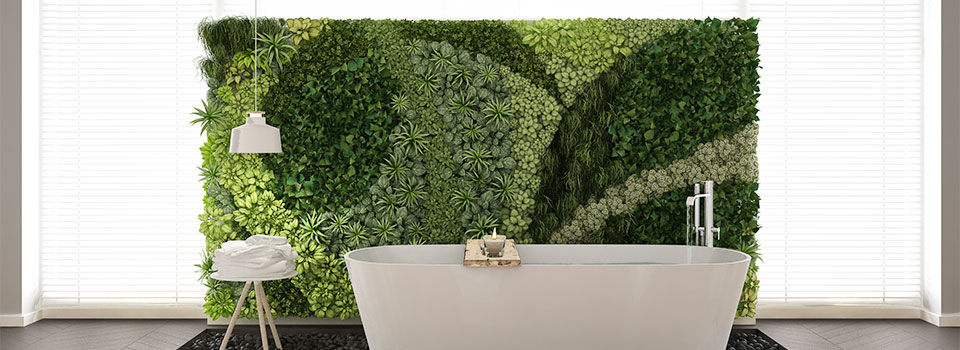
Flowers, foliage, and greenery are more than just ornamental décor — a living wall or vertical garden is a work of art for your house. Whether you design a wall mounted-planter for indoors or build natural fencing for outdoors, it's easy to bring your vision to life. All you need is a visual concept and the right tools and hardware.
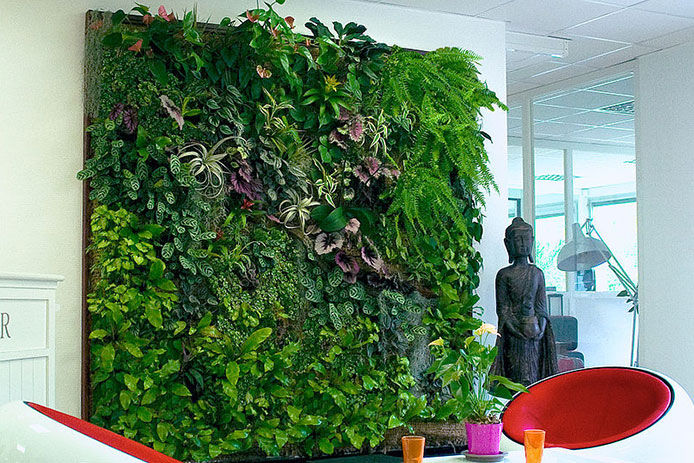
You have several options when it comes to a vertical garden inside your home, starting with a prefabricated kit of wood, plastic, or metal. Lattice-patterned wood slats are great for lacing ivy stems and spreading rhizomes. Measure the area and be sure that the wall is solid enough to handle the weight of a planter filled with greenery.
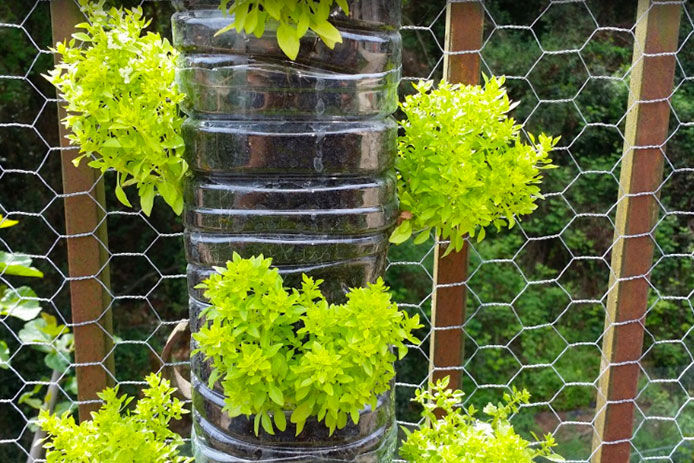
You can buy living wall panels, boxes, or frames, or even use a chain-link fence. But you'll want to secure it with wooden stakes. Other necessary items include:

Natural light from a nearby window or skylight is crucial. Plants need to produce their own food (chlorophyll) through photosynthesis. If natural light isn't accessible, you can install indoor plant lights. Plants that grow in low light conditions include philodendrons, pathos, snake plant, kentia palm, and lucky bamboo.
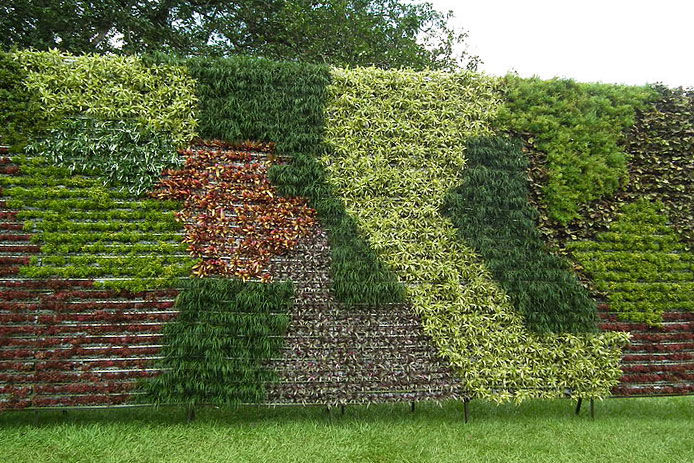
Choose greenery that grows best in your area's USDA plant hardiness zone. Climate, light, and location determine whether the plants will thrive or dive. If you're using succulent vegetation or drought-resistant cool fescue on your lawn, note how easy it would be to care for grasses on, or next to the wall. Native plants are always a plus.
For your first living wall project, start small and with plants that you can reach and prune regularly. Lay them out in vertical or angular lines so that higher plants will not block the light from those beneath them. Although you're building the wall on your own property, contact your city's government to determine if there are any building codes or restrictions for building new structures. Design the outdoor wall with an aerial view of the yard and then create a blueprint.
Building the wall starts with a frame and a grid. It is a good idea to mark all studs with painter's tape before nailing anything to the outdoor wall of the home.
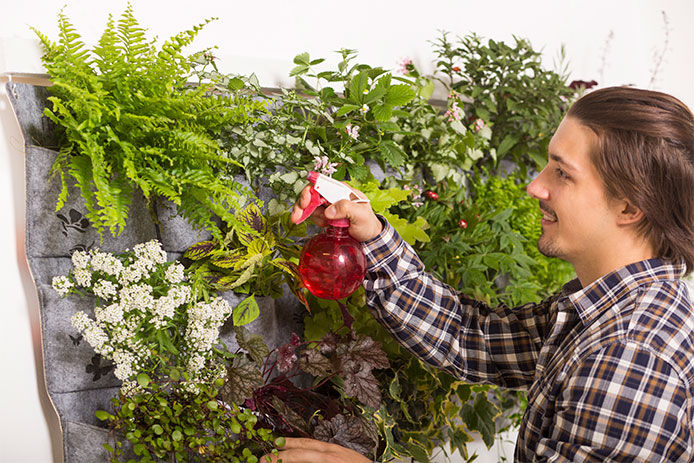
If there's a self-watering system in place, that's half the battle. But because most indoor living wall structures must be hand-watered, you can tend to that as often as you would any other houseplant. Take care not to overwater, or you'll have excess moisture running down the wall! Wipe plants periodically to prevent issues with bugs and dirt. For outdoor walls, you may get enough hydration from rainfall, but don't count on it — especially during periods of drought. You will also need to treat the wall for pests. Go organic whenever possible, since chemical pesticides and fertilizers are harmful to the environment, even when applied to a vertical garden.
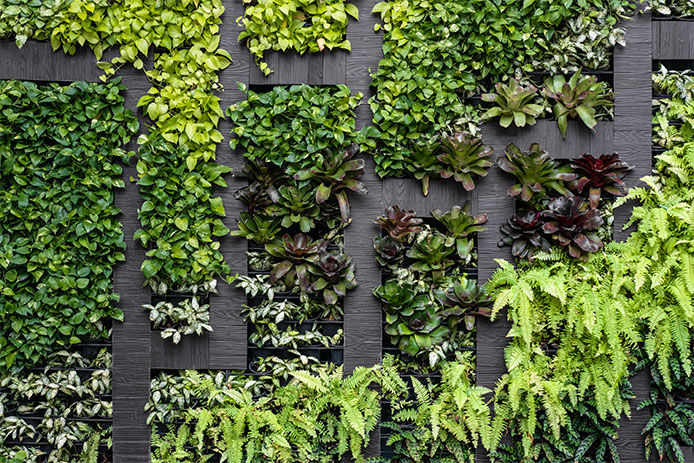
Plants and the structure they're settled into will add a lot of weight to the wall and frame of your house or fence. Locate and then mount the frame to the wall studs for extra stability. The ideal height is 2 or 3 feet, depending on how much space you have available. If you're creating a privacy fence, (which also serves as an excellent windbreak) you may want to go as high as 6 feet, with drought-resistant plants in those hard-to-reach places.
Small shelves for terra cotta, plastic, or ceramic pots can prevent them from coming loose and breaking. Flexible canvas pouches can hold root balls and extra soil.
When planning a living wall for the inside of a house, apartment, office building, and any other kind of structure, you should first lay it out on paper. It's much easier to use an eraser than to tear down a structure. Building a living wall may sound like a lot of work, but think of the benefits. You'll be improving the air quality by adding greenery, and you won't lose any yard or floor space. You also won't be straining your back by bending over to water your plants. Happy planting!
Article Author
Teri Silver is a journalist and outdoor enthusiast who spends her weekends mowing her 5-acre lawn. She's an avid do-it-yourselfer who refurbishes anything she can get her hands on.